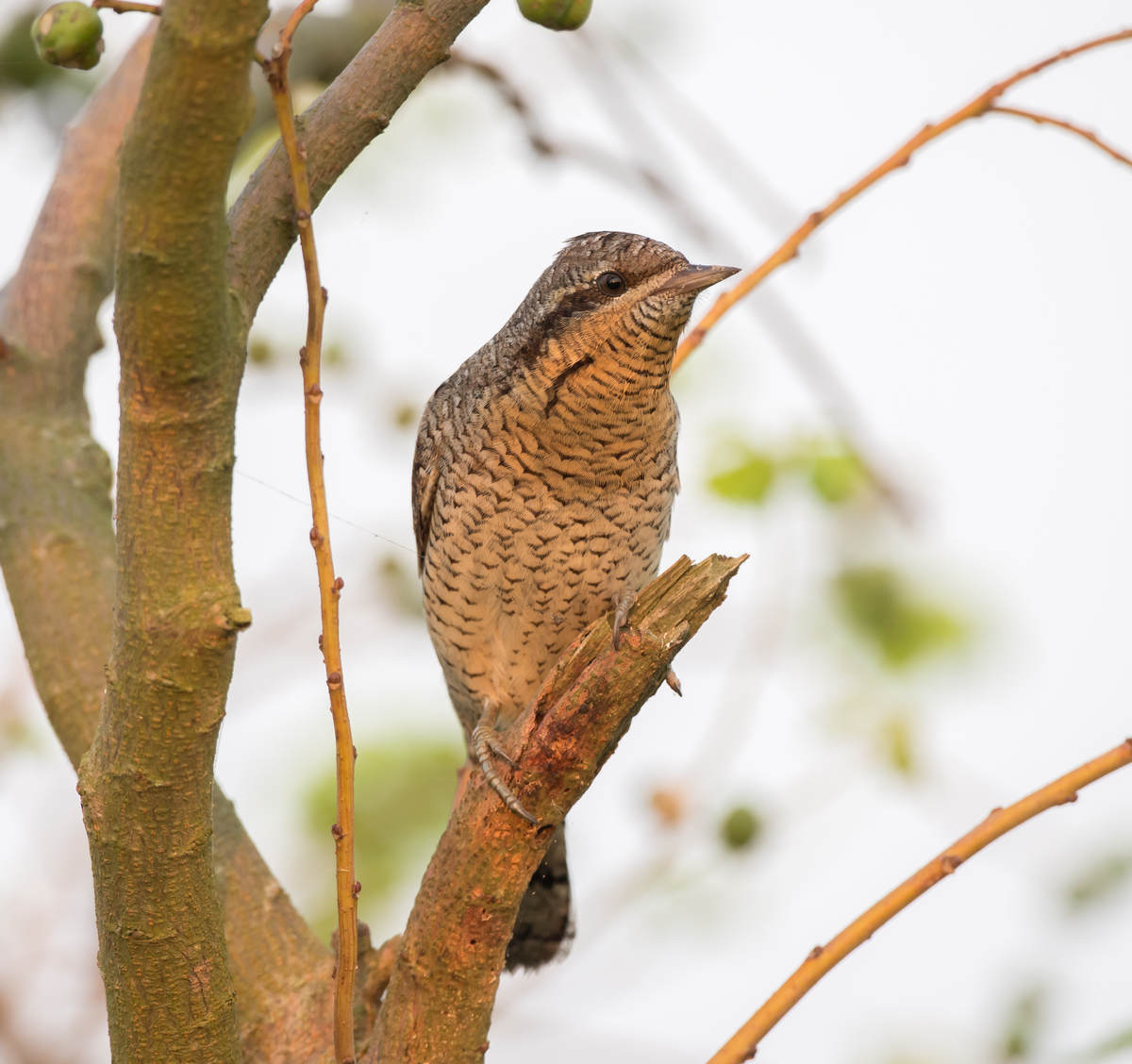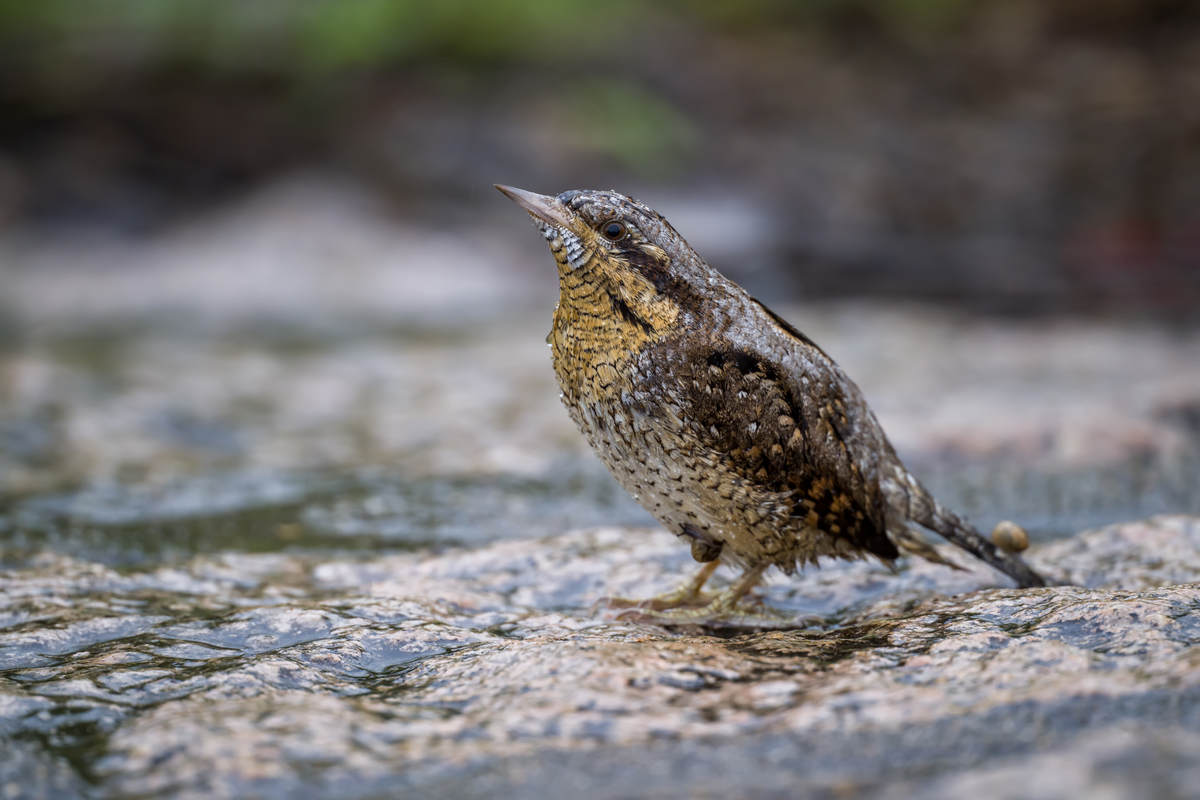Embark on an ornithological journey as we delve into the captivating world of the Eurasian wryneck, a remarkable bird that has captured the attention of bird enthusiasts worldwide. With its distinctive neck and peculiar hunting technique, this avian marvel has woven a tapestry of intrigue and admiration.
Join us as we unravel the mysteries surrounding this enigmatic species, exploring its taxonomy, physical characteristics, distribution, behavior, and conservation status.
Prepare to be captivated by the Eurasian wryneck’s extraordinary adaptations, its unique ecological niche, and the ongoing efforts to safeguard its future. As we delve into the depths of this avian wonder, we will uncover a world of hidden wonders and intriguing insights that will leave you in awe of the resilience and beauty of the natural world.
Taxonomy and Classification
The Eurasian wryneck ( Jynx torquilla ) is a bird species classified under the family Certhiidae, which also includes treecreepers. It belongs to the order Piciformes, which comprises woodpeckers, barbets, and honeyguides. Within the Certhiidae family, the Eurasian wryneck is placed in the genus Jynx , which contains only one other species, the African wryneck ( Jynx ruficollis ).
Relationship to Other Bird Species
The Eurasian wryneck shares certain morphological and behavioral characteristics with other members of the Certhiidae family, such as a long, slender bill and a knack for foraging on tree trunks. However, it stands out from other treecreepers due to its distinctive appearance, including a mottled brown plumage and a peculiar habit of twisting its head in a snake-like manner.
Despite these differences, genetic studies have confirmed the Eurasian wryneck’s close relationship to other Certhiidae species, particularly the treecreepers of the genus Certhia .
Physical Characteristics

The Eurasian wryneck is a small bird with a distinctive appearance. It measures approximately 15-17 cm in length, with a wingspan of 25-30 cm. It weighs around 25-35 grams. The plumage of the wryneck is mainly brown, with intricate patterns of black, gray, and white markings.
These markings serve as camouflage, helping the bird to blend in with its surroundings.
Distinctive Neck and Bill
The Eurasian wryneck has a unique neck and bill structure. Its neck is long and flexible, allowing it to twist and turn its head in a distinctive manner. This behavior is believed to be a defense mechanism, as it makes the bird appear larger and more threatening to potential predators.
The wryneck’s bill is long and slightly curved, which is well-suited for its primary food source of ants and their larvae.
Distribution and Habitat
The Eurasian wryneck is a widely distributed species, found across a vast geographic range that spans Europe, Asia, and parts of North Africa. These birds are known for their adaptability, inhabiting a diverse array of habitats, including woodlands, forests, parks, gardens, and even urban areas.
Geographic Range
The Eurasian wryneck is a migratory species, breeding in Europe and parts of Asia during the summer months. During the winter, they migrate to warmer regions, including North Africa, the Middle East, and parts of South Asia. Their migratory routes vary depending on the population, but they generally follow a north-south pattern, with some birds traveling long distances to reach their wintering grounds.
Preferred Habitats
Eurasian wrynecks prefer habitats with an abundance of trees and shrubs, as they provide cover for nesting and foraging. Woodlands and forests are particularly important, as they offer a rich source of insects, the wryneck’s primary food source. They are also commonly found in parks and gardens, where they can find suitable nesting sites and a reliable supply of insects.
Behavior and Ecology
The Eurasian wryneck exhibits unique behaviors and ecological adaptations that contribute to its survival and reproductive success.
Feeding Habits
The Eurasian wryneck primarily feeds on ants and other insects. It employs a distinctive hunting technique known as “anting,” where it rubs itself against ant nests or mounds. The ants release formic acid as a defense mechanism, which the wryneck ingests.
The formic acid helps the bird remove parasites and keeps its feathers clean. In addition, the wryneck also consumes termites, beetles, and larvae.
Social Behavior and Breeding Habits
Eurasian wrynecks are generally solitary birds, except during the breeding season. They are monogamous and form long-term pair bonds. The breeding season typically occurs from April to July. The female lays a clutch of 5-8 eggs in a tree cavity or nest box.
Both parents incubate the eggs for 12-13 days and care for the chicks until they become independent at around 20 days of age.
Conservation Status and Threats
The Eurasian wryneck is classified as a species of “Least Concern” by the International Union for Conservation of Nature (IUCN). However, some populations have declined in recent years, particularly in Western Europe.Potential threats to the Eurasian wryneck include:
Habitat Loss
The wryneck’s preferred habitat, consisting of open woodlands and orchards, is increasingly fragmented and destroyed due to urbanization, agricultural intensification, and deforestation.
Climate Change
Climate change may also impact the wryneck’s distribution and breeding success. Warmer temperatures could lead to changes in prey availability and nest site suitability, while increased rainfall and flooding events could destroy nests and reduce breeding success.
Conservation Measures
Conservation measures being implemented to protect the Eurasian wryneck include:
- Habitat protection and restoration
- Nest box provision
- Public awareness campaigns
- Monitoring and research
Summary

As we bid farewell to our exploration of the Eurasian wryneck, let us carry with us a newfound appreciation for the intricate tapestry of life that surrounds us. This remarkable bird, with its captivating quirks and ecological significance, serves as a testament to the boundless wonders that await discovery in the natural world.
May our journey inspire a deeper connection to the avian kingdom and a renewed commitment to protecting the delicate balance of our ecosystems. Until our next ornithological adventure, may the spirit of the Eurasian wryneck continue to inspire and captivate us.
Questions and Answers
What is the distinctive physical feature of the Eurasian wryneck?
The Eurasian wryneck possesses a unique neck and bill structure. Its neck is exceptionally flexible, allowing it to twist its head almost 180 degrees, giving it an almost serpentine appearance. Additionally, its bill is long, slender, and slightly decurved, perfectly adapted for extracting insects from crevices and bark.
How does the Eurasian wryneck hunt for food?
The Eurasian wryneck employs a peculiar hunting technique known as “anting.” It involves rubbing its body against ants, releasing formic acid, which has an intoxicating effect on the bird. This behavior is believed to help the wryneck remove parasites and improve its plumage condition.
What is the conservation status of the Eurasian wryneck?
The Eurasian wryneck is classified as a species of Least Concern by the International Union for Conservation of Nature (IUCN). However, its populations have been declining in recent years due to habitat loss, climate change, and the use of pesticides.
Conservation efforts are underway to protect and restore its habitats and address these threats.




